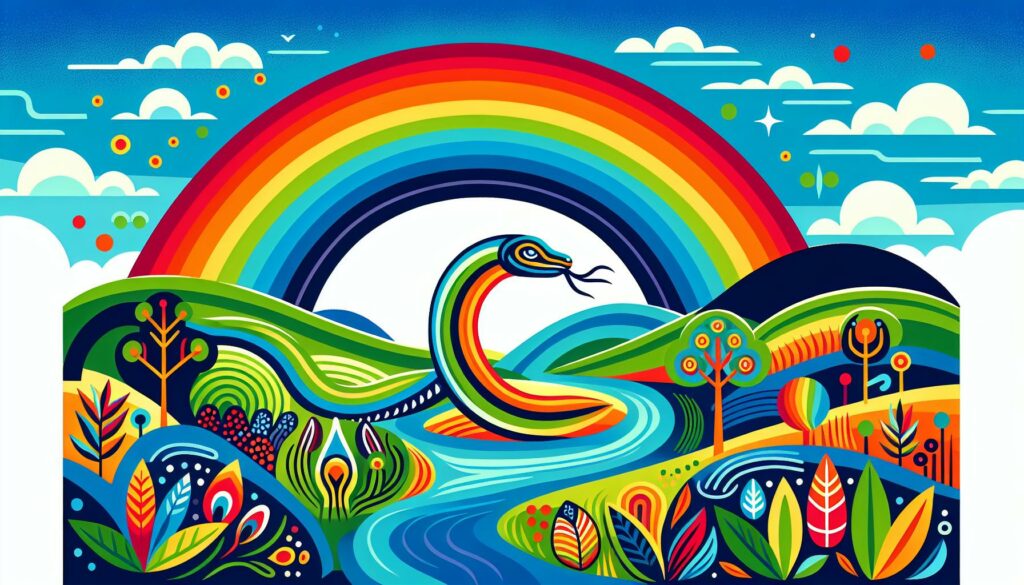The Rainbow Serpent stands as one of the most powerful symbols in Aboriginal folklore. I’ve always been fascinated by its vibrant presence and the deep meanings it holds within various Indigenous cultures. This mythical creature is more than just a story; it represents creation, life, and the natural elements that sustain us.
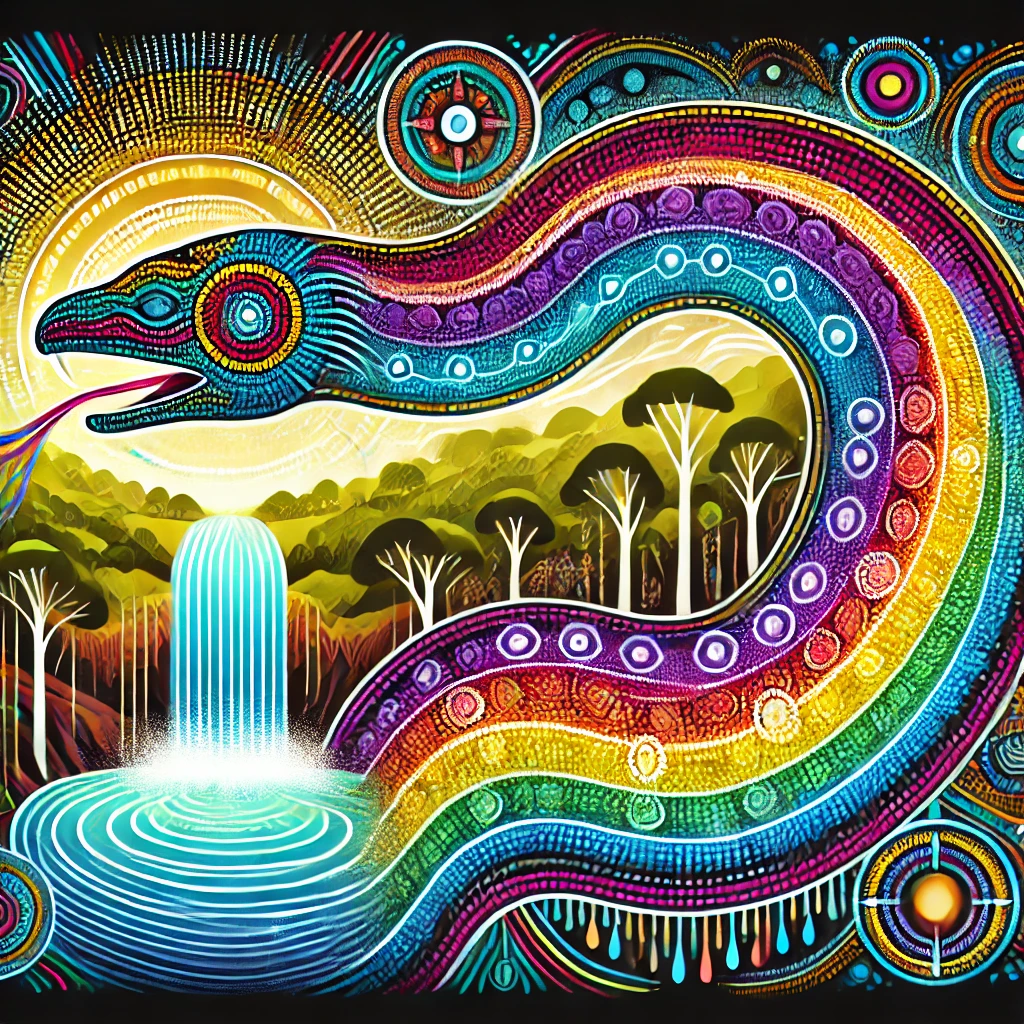
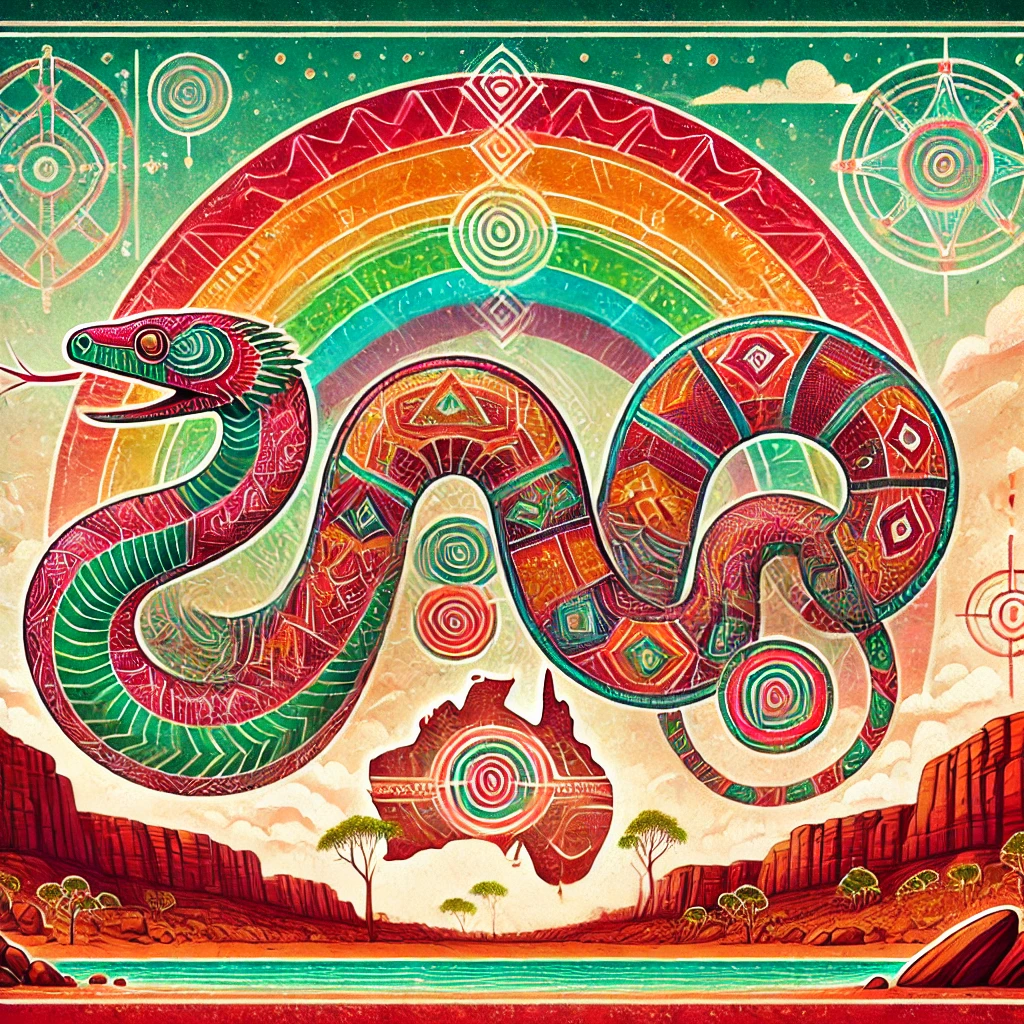

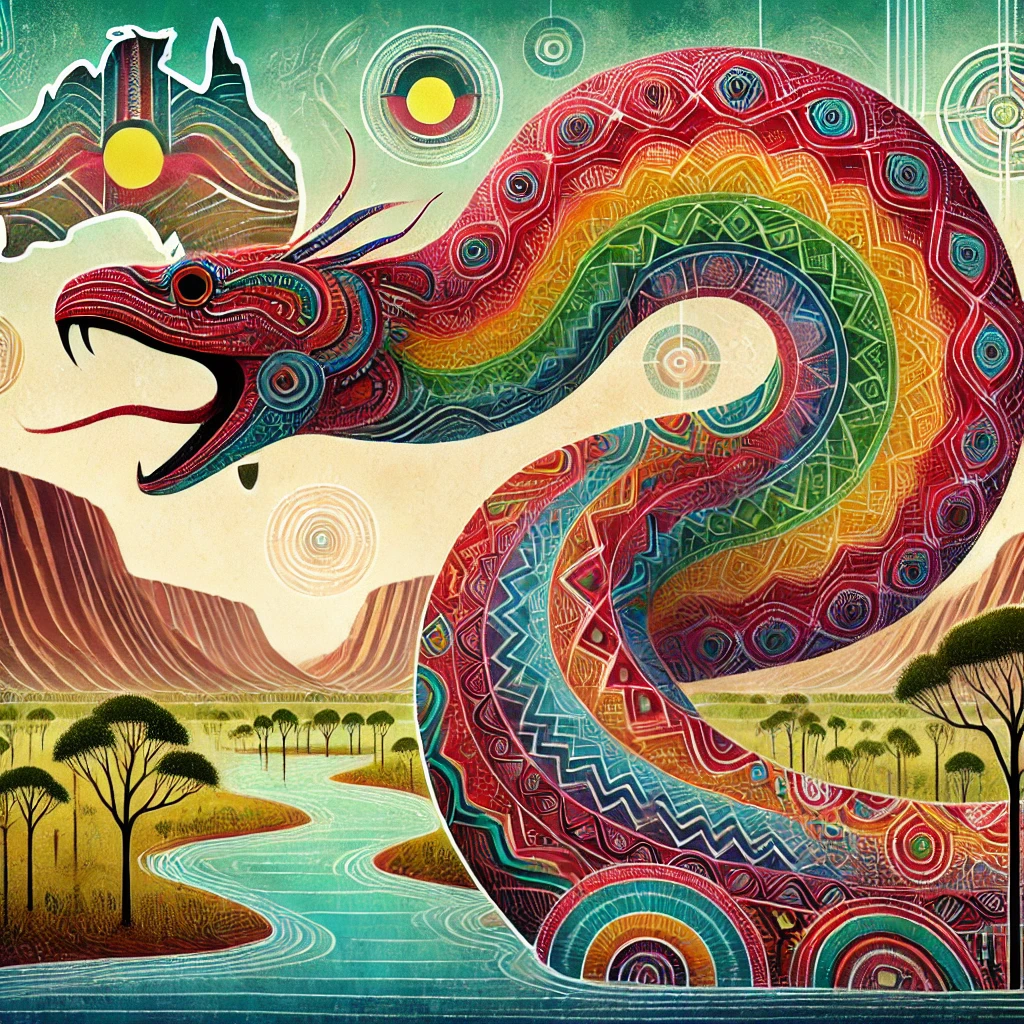
Exploring the legend of the Rainbow Serpent reveals its role in shaping the land and guiding the people. From ancient tales passed down through generations to its significance in contemporary Indigenous identity, the Rainbow Serpent continues to inspire and teach valuable lessons about harmony and respect for nature. Join me as we delve into the rich narrative and uncover the enduring legacy of this incredible folklore.
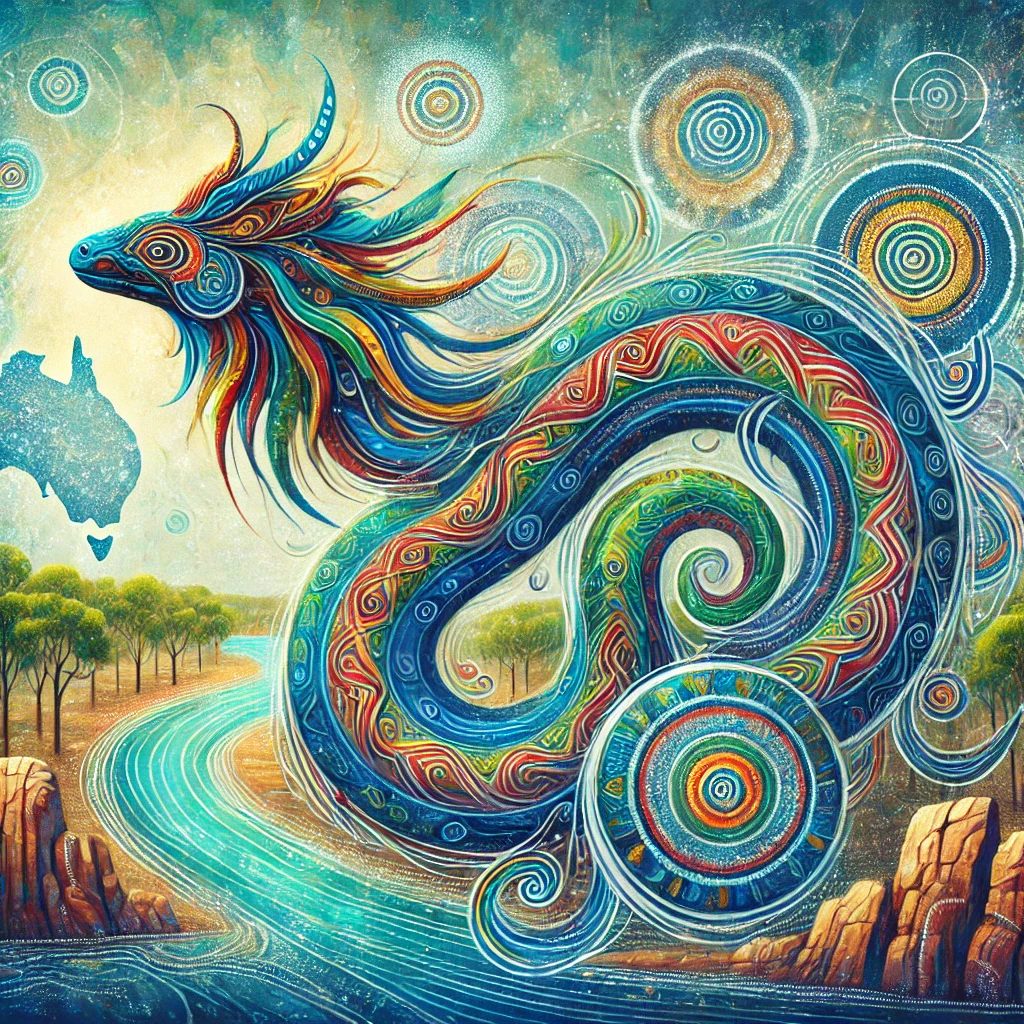
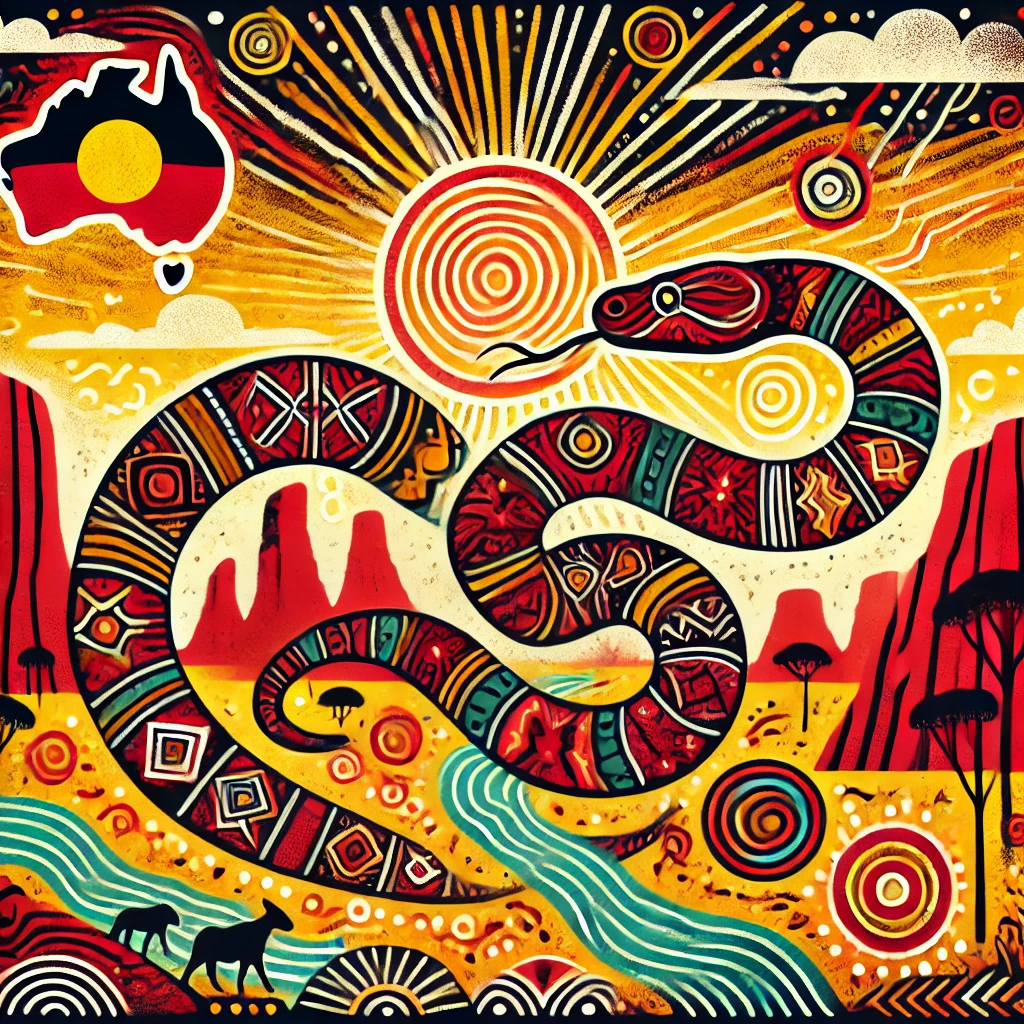
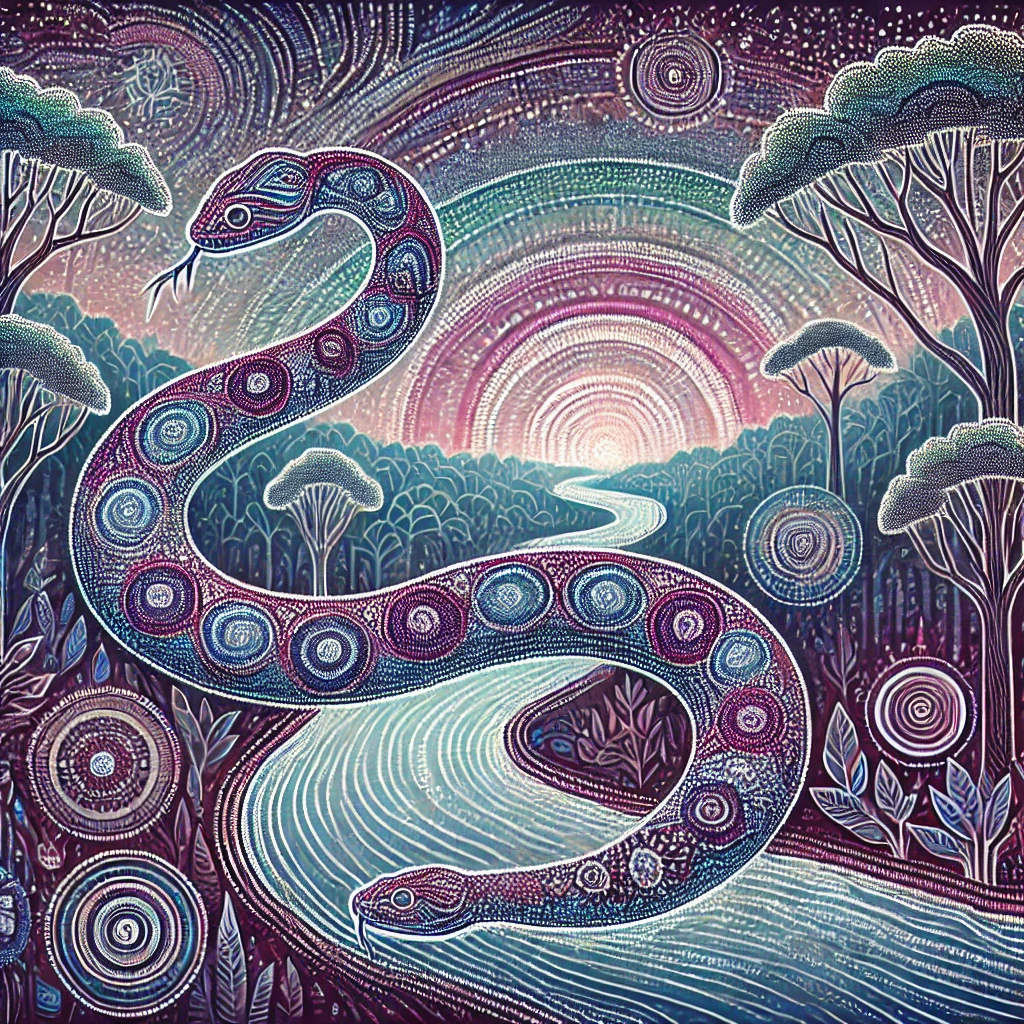
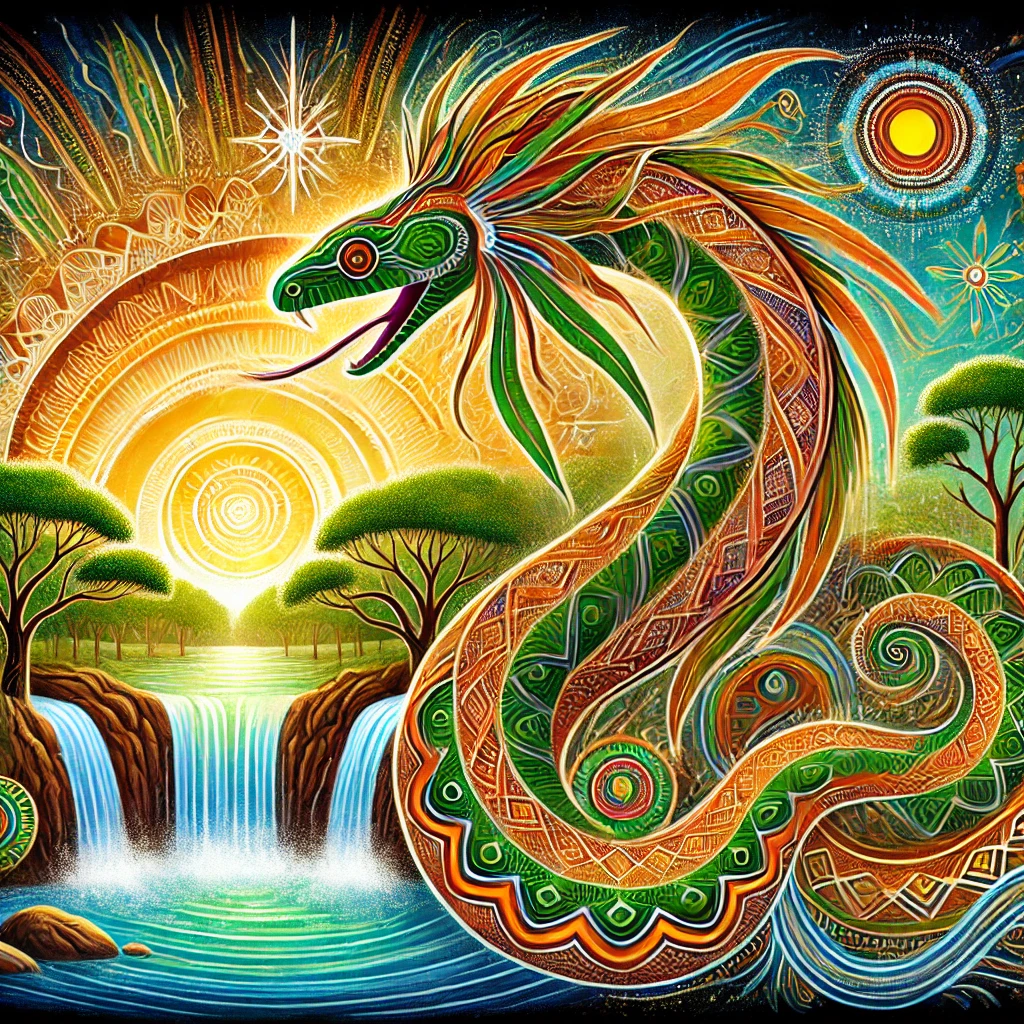
Origins of the Rainbow Serpent
The Rainbow Serpent stands as one of the oldest deities in Aboriginal mythology, with beliefs tracing back over 10,000 years. Emerging from the earth during the Dreamtime, it played a pivotal role in shaping the landscape. As it moved, the Rainbow Serpent formed mountains, carved out valleys, and created ridges, establishing the terrain’s foundational features. This powerful being’s actions during the Dreamtime laid the groundwork for the natural world, embedding its presence in the very fabric of the land. The Rainbow Serpent’s creation myths highlight its significance as a life-giver and earth-shaper, cementing its revered status across Indigenous Australian communities.
Roles and Attributes
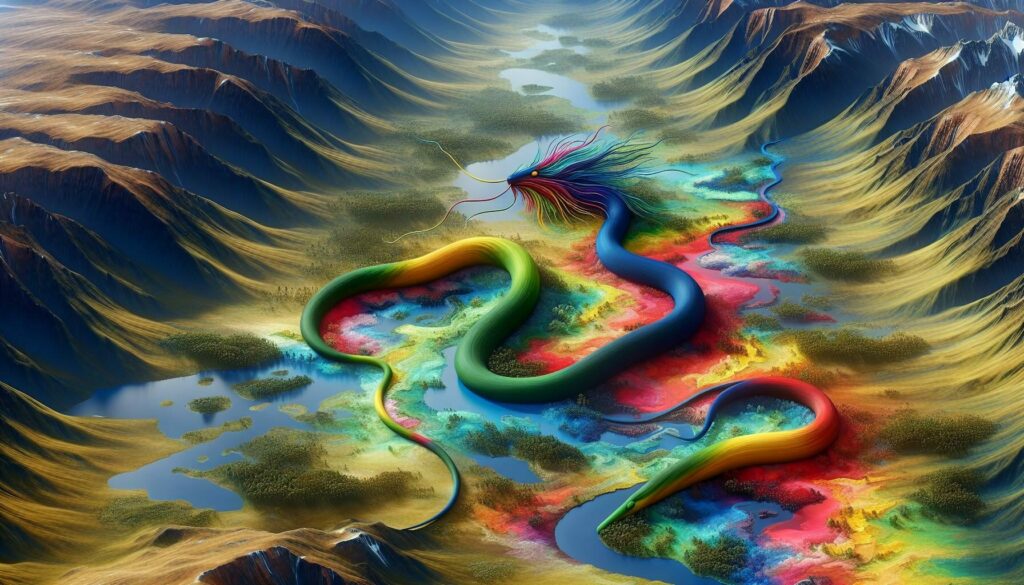
The Rainbow Serpent holds multifaceted roles within Aboriginal folklore, embodying creation, protection, life, and justice.
Creation and Shaping the Landscape
As a creator and protector, the Rainbow Serpent formed the earth by shaping mountains, valleys, and ridges through its movements. It controls all water sources, including subterranean waterholes, ensuring the sustenance of ecosystems and communities. If water sources are threatened, the Serpent guards them fiercely, maintaining the balance of the natural environment.
Symbolism in Aboriginal Culture
The Rainbow Serpent symbolizes life and fertility, blessing nature and governing the propagation of plants and animals. It is integral to adolescent rites of passage and menstruation, marking significant transitions in individuals’ lives. Additionally, as a judge and punisher, the Serpent enforces social laws and metes out punishment for wrongdoing. When societal rules are broken, the Rainbow Serpent can unleash natural disasters like floods or droughts to restore order.
Regional Variations
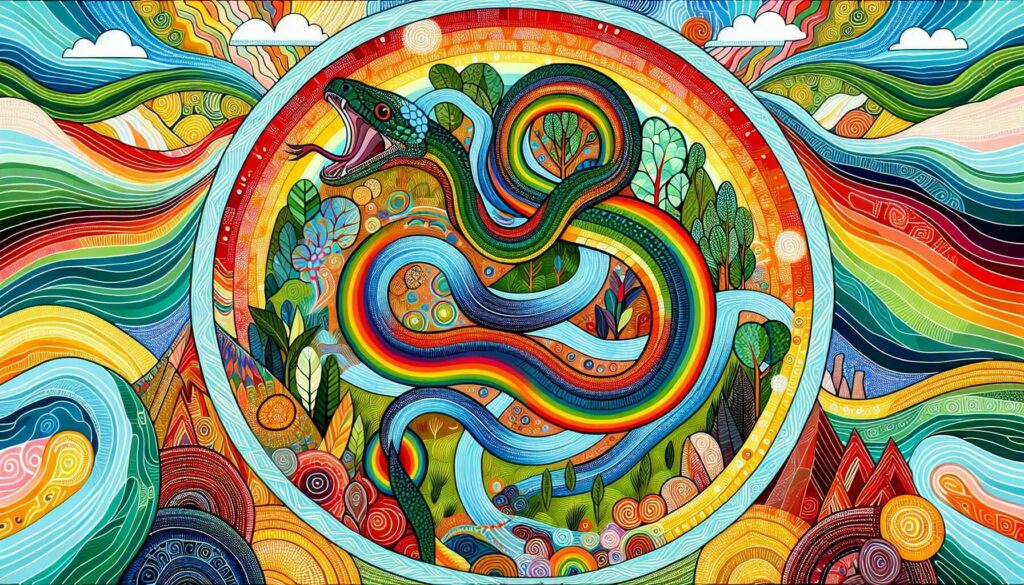
The Rainbow Serpent holds diverse meanings across Aboriginal communities, reflecting each region’s unique environment and cultural practices.
Different Tribal Interpretations
Various Aboriginal groups perceive the Rainbow Serpent uniquely:
- Kulin Nation (Victoria): Represents both creation and destruction, controlling water sources and enforcing laws.
- Gugu Yimithirr (Queensland): Seen as a guardian of rivers and essential for maintaining water balance.
- Noongar (Western Australia): Embodies ancestral spirits, guiding the creation of landforms and sustaining life.
- Yolngu (Northern Territory): Symbolises fertility and the renewal of the land, playing a role in ceremonial rites.
- Water Control: Governs rivers, lakes, and waterholes, ensuring ecosystem sustainability.
- Creation Power: Shapes the landscape by forming geographical features during the Dreamtime.
- Life-Giving Force: Brings fertility to the land, supporting plant and animal life.
- Law Enforcer: Maintains social order, punishing violations to uphold community laws.
- Symbol of Renewal: Indicates cycles of drought and abundance, marked by the appearance of rainbows.
The Rainbow Serpent in Contemporary Culture
The Rainbow Serpent remains a potent symbol in modern Aboriginal art, frequently depicted in paintings, sculptures, and installations. Indigenous artists incorporate its vibrant colours and dynamic forms to convey cultural stories and ancestral connections. Exhibitions featuring the Rainbow Serpent attract both local and international audiences, enhancing cultural appreciation and awareness.
In literature and media, the Rainbow Serpent features in novels, films, and documentaries that explore Aboriginal mythology and contemporary issues. Authors integrate its legend to highlight themes of creation, environmental stewardship, and social justice. Documentaries showcase the serpent’s significance in community rituals and its role in preserving cultural heritage.
The Rainbow Serpent influences contemporary Indigenous identity, serving as a unifying emblem across various communities. It symbolizes resilience, connection to the land, and the continuity of traditions. Cultural festivals celebrate the serpent through performances, storytelling, and art, reinforcing its relevance in today’s society.
Tourism initiatives leverage the Rainbow Serpent to promote cultural experiences and eco-tourism. Guided tours often include narratives about the serpent’s creation myths, offering visitors a deeper understanding of Aboriginal connections to nature. Educational programs in museums and cultural centres use the Rainbow Serpent to teach about Indigenous history and environmental management practices.
Corporate branding occasionally adopts the Rainbow Serpent to signify sustainability and natural harmony. Businesses partner with Indigenous artists to create authentic representations, fostering respectful collaborations and supporting local economies. These initiatives highlight the serpent’s enduring legacy and its ability to inspire positive change in contemporary contexts.
| Aspect | Description |
|---|---|
| Art | Featured in paintings, sculptures, and exhibitions worldwide |
| Literature & Media | Appears in novels, films, and documentaries exploring Aboriginal mythology |
| Indigenous Identity | Symbolises resilience and connection to land, unifying various Aboriginal communities |
| Tourism | Promotes cultural and eco-tourism through guided tours and educational experiences |
| Corporate Branding | Represents sustainability and natural harmony in business collaborations |
The Rainbow Serpent’s presence in contemporary culture underscores its enduring significance and adaptability. It bridges traditional beliefs with modern expressions, ensuring that its legacy continues to inspire and educate future generations.
Significance and Legacy
The Rainbow Serpent holds a pivotal role in Aboriginal culture, symbolising creation, life, and the natural order. It governs water sources, ensuring the survival of ecosystems and communities. By controlling rivers, lakes, and rain, the Serpent maintains the balance between drought and abundance, reflecting the cyclical nature of the environment.
Aboriginal art frequently features the Rainbow Serpent, using vibrant colours and dynamic forms to convey its stories. These artistic representations preserve cultural narratives and educate future generations about traditional beliefs. Additionally, the Serpent appears in literature and media, highlighting themes of environmental stewardship and social justice.
Cultural festivals celebrate the Rainbow Serpent through performances and storytelling, reinforcing its importance in contemporary Indigenous identity. These events foster community cohesion and honour ancestral traditions, keeping the Serpent’s legacy alive.
Tourism initiatives leverage the Rainbow Serpent to offer authentic cultural experiences. Guided tours provide insights into Aboriginal connections to the land, promoting eco-tourism and respectful engagement with Indigenous communities. Furthermore, corporate branding sometimes adopts the Serpent to signify sustainability, fostering collaborations with Aboriginal artists and businesses.
The Rainbow Serpent’s enduring legacy bridges ancient mythology with modern expressions, ensuring its significance remains robust. It serves as a unifying emblem across various Aboriginal communities, symbolising resilience and a deep connection to the land.
Key Takeaways
- Ancient Origins: The Rainbow Serpent is a foundational deity in Aboriginal mythology, instrumental in shaping the Australian landscape during the Dreamtime.
- Multifaceted Roles: It embodies creation, protection, life, and justice, controlling water sources and enforcing social laws to maintain balance in nature and society.
- Cultural Symbolism: Represents life and fertility, plays a crucial role in rites of passage, and symbolizes the cycles of renewal and environmental harmony.
- Regional Variations: Different Aboriginal communities, including the Kulin Nation, Gugu Yimithirr, Noongar, and Yolngu, have unique interpretations and significance attached to the Rainbow Serpent.
- Contemporary Influence: Prominent in modern Indigenous art, literature, and media, the Rainbow Serpent serves as a unifying emblem for Indigenous identity and cultural expression.
- Enduring Legacy: Continues to inspire cultural festivals, eco-tourism, and sustainable corporate branding, bridging traditional beliefs with contemporary practices.
Conclusion
Understanding the Rainbow Serpent deepens my appreciation for Aboriginal culture and its rich storytelling traditions. This legendary figure embodies the connection between the people and the land, highlighting the importance of harmony and respect for nature.
As I reflect on its enduring legacy, I’m inspired by how the Rainbow Serpent continues to influence contemporary art and cultural identity. It serves as a powerful reminder of the resilience and wisdom embedded in Indigenous traditions, ensuring these stories remain vibrant and relevant today.
Frequently Asked Questions
What is the Rainbow Serpent in Aboriginal folklore?
The Rainbow Serpent is a powerful symbol in Aboriginal mythology, representing creation, life, and natural elements. Emerging from the Dreamtime over 10,000 years ago, it shaped the landscape by forming mountains, valleys, and rivers. The Serpent embodies fertility, controls water sources, and enforces social laws, making it a revered figure in various Indigenous Australian communities.
What roles does the Rainbow Serpent play in Indigenous cultures?
The Rainbow Serpent serves multiple roles including creation, protection, and justice. It controls water sources, ensures the sustenance of ecosystems, and governs life and fertility. Additionally, it acts as a judge, enforcing social laws and restoring order through natural disasters if necessary. The Serpent is also integral to significant life transitions like rites of passage and menstruation.
How does the Rainbow Serpent vary across different Aboriginal communities?
Regional Aboriginal communities interpret the Rainbow Serpent uniquely based on their environment and cultural practices. For example, the Kulin Nation views it as both a creator and destroyer, while the Gugu Yimithirr see it as a river guardian. The Noongar associate it with ancestral spirits, and the Yolngu regard it as a symbol of fertility and land renewal, reflecting diverse beliefs and traditions.
What is the significance of the Rainbow Serpent in the Dreamtime?
In the Dreamtime, the Rainbow Serpent played a crucial role in shaping the Australian landscape by creating mountains, valleys, and water bodies. This era established the foundational features of the terrain and reinforced the Serpent’s status as a life-giver and earth-shaper, highlighting its importance in the origins and continuity of the land and its people.
How is the Rainbow Serpent depicted in contemporary Aboriginal art and culture?
Today, the Rainbow Serpent remains a central figure in Aboriginal art, literature, and media. Indigenous artists use vibrant colours and dynamic forms to tell cultural stories, while authors incorporate its legend into narratives about creation and environmental stewardship. It symbolizes resilience and connection to the land, appearing in cultural festivals, performances, and storytelling.
How does the Rainbow Serpent influence modern Indigenous identity?
The Rainbow Serpent is a unifying emblem for many Indigenous communities, symbolising resilience and a deep connection to the land. It represents traditional beliefs and cultural narratives, fostering a sense of identity and continuity. The Serpent’s legacy bridges ancient mythology with contemporary expressions, ensuring its significance remains strong in modern Indigenous identity.
How is the Rainbow Serpent used in tourism and corporate branding?
Tourism initiatives use the Rainbow Serpent to promote cultural experiences and eco-tourism, offering guided tours that highlight Aboriginal connections to nature. In corporate branding, it symbolizes sustainability and natural harmony, fostering respectful collaborations with Indigenous artists. This use helps educate visitors about traditional beliefs and supports the preservation of cultural narratives.
What lessons does the Rainbow Serpent impart about nature and society?
The Rainbow Serpent teaches the importance of harmony and respect for nature, highlighting the interconnectedness of ecosystems. It enforces social laws, promoting justice and order within communities. By controlling water sources and ensuring fertility, the Serpent underscores the need to sustain natural resources and maintain balance in both the environment and social structures.
Why is the Rainbow Serpent considered an enduring legacy in Aboriginal culture?
The Rainbow Serpent remains a potent symbol due to its deep roots in creation stories and its ongoing relevance in contemporary culture. It continues to inspire art, literature, and cultural practices, while also serving as a symbol of resilience and identity. Its ability to adapt and remain significant across generations ensures its enduring legacy in Aboriginal culture.
How does the Rainbow Serpent symbolize cycles of drought and abundance?
The Rainbow Serpent is associated with water and rainbows, symbolising the cycles of drought and abundance. Its appearance often marks the arrival of rain, essential for sustaining life and ecosystems. By controlling water sources, the Serpent ensures the balance between dry and wet periods, reflecting the natural rhythms and resilience of the environment.
Author

Josh Morley holds a Bachelor’s degree in Theology from the Trinity School of Theology and a Diploma in Theology from the Bible College of Wales. His academic journey involved interfaith community projects and supporting international students, experiences that shaped his leadership and reflective skills. Now based in Liverpool, Josh is also the founder of Marketing the Change, a digital agency specializing in web design and marketing.
View all posts

